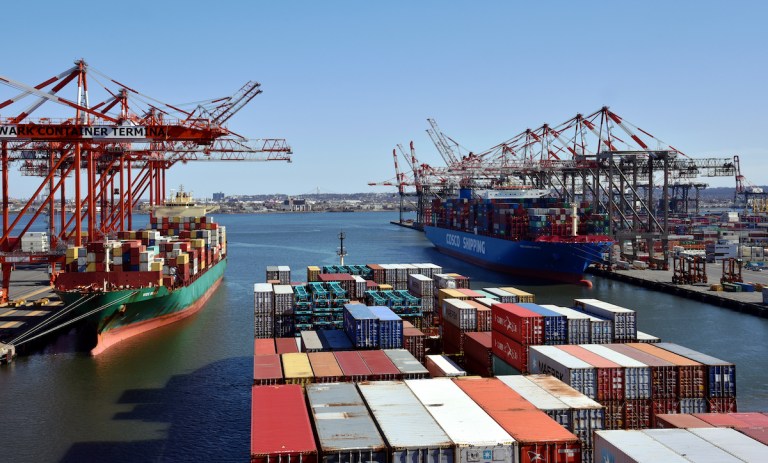
Operations at around three dozen U.S. ports are in limbo as a union strike looms.
The disruption, spanning the East Coast down to the Gulf, all the way from Searsport, Maine, to Brownsville, Texas, could spell disaster for both domestic and foreign supply chains across multiple sectors.
It would be the first coast-wide dockworker strike on American shores since 1977, and the threat of its arrival comes as about 45,000 members of the International Longshoremen’s Association’s (ILA) are seeking a new agreement with the U.S. Maritime Alliance before their contract expires Monday (Sept. 30).
A labor strike could affect the global supply chain, leading to delays, shortages and rising costs at a time when inflationary pressures and economic uncertainties already weigh heavily on the economy. The ports staffed by ILA members, including those in New York, New Jersey and Savannah, Georgia, are vital for the import and export of goods in the U.S. and receive 41% of the United States’ port volume, the Financial Times reported.
“A strike at this point in time would have a devastating impact on the economy…,” warned a coalition of 177 trade groups in a letter to President Joe Biden Tuesday (Sept. 17).
Cargo diversions and other contingency plans have been set into motion by shippers and logistics providers, including shifting volumes to West Coast ports, CBS News reported, although these options come with higher costs and their own set of challenges.
With the holiday shopping season approaching, businesses may be forced to scramble for alternatives to meet consumer demand, risking either product shortages or costly air freight shipments to maintain inventories.
Read also: Managing Risk and Uncertainty Headline Commerce Department’s Supply Chain Summit
A prolonged disruption across East Coast ports would send shockwaves through supply chains worldwide, particularly for industries reliant on just-in-time inventory systems or specialized materials. Given the interconnected nature of global commerce, the consequences of even a short-term strike could reverberate beyond the U.S.
July PYMNTS Intelligence revealed that concerns over supply chain integrity and macroeconomic conditions highlight how larger external factors remain on chief financial officers’ radars.
As businesses brace for the potential strike at U.S. ports, the importance of proactive planning cannot be overstated. While the exact outcome remains uncertain, the potential consequences of a labor disruption at key maritime gateways are clear: delays, higher costs and strained supply chains.
Companies that take steps now to diversify their logistics strategies, strengthen supplier relationships and use technology will be better positioned to weather the storm, and for many businesses, the key to survival lies in agility, adaptability and the ability to navigate uncertainty.
Building stronger relationships with suppliers — both domestic and international — can help companies secure more favorable terms and greater flexibility in the event of supply chain disruptions. Open lines of communication with suppliers can help businesses stay informed of potential risks and delays, allowing for more effective contingency planning.
At the same time, digital tools and data analytics can provide businesses with better insights into their supply chains, allowing them to anticipate potential delays and adjust their logistics strategies in real time. These tools can also help companies identify inefficiencies and streamline operations, making it easier to adapt to unexpected disruptions.
See also: How Digital Transformation Aligns Supply Chains With Compliance, Sanctions Risk
The specter of the worker strike serves as a reminder of the fragility of supply chains and adds another snarl to the global shipping landscape atop ongoing attacks from Houthi militants in the Red Sea and broader geopolitical tensions.
Still, although disastrous events can trigger repercussions around the globe, they have also forced companies to invest in upgrades that have resulted in smoother procurement and supply chain efficiencies, rather than relying solely upon just-in-time delivery workflows.
The PYMNTS Intelligence report “Digital Payments: Modernizing Procurement Processes” revealed that corporations learned lessons from the supply chain disruptions triggered by the COVID-19 pandemic. As a result, many of those companies took steps to improve their supply chain procedures.
At the same time, the embrace by firms of some of the more spear-tip advances reshaping logistics and warehouse fulfillment, such as automation, remain a central concern of the ILA members threatening to strike.
“We will not accept automation replacing the men and women who built this industry with their blood, sweat, and sacrifice,” said ILA Executive Vice President Dennis A. Daggett in a statement Friday (Sept. 20).